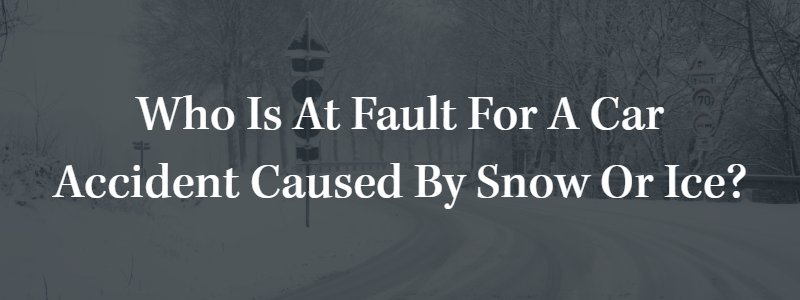When the weather gets cold, accidents caused by snow and ice start to occur. In some cases, no single party is to blame for these accidents. However, there are times when the careless or negligent actions of one or more drivers directly cause a snow and ice crash in Pennsylvania. Here, we want to take some time to discuss liability surrounding accidents caused by snow and ice. This is important because determining liability is often the key factor in securing compensation for injury and property damage victims.
Snow and ice can cause severe accidents
According to data available from the Pennsylvania Department of Transportation, we can see that there were 8,316 total vehicle crashes caused by snow, sleet, or freezing rain across the Commonwealth during the latest reporting year. Out of these incidents, 37 people lost their lives and many others were injured. Unfortunately, accidents involving snow and ice often occur at higher speeds and when drivers are unable to slow down. It is not uncommon for drivers and passengers in these cases to sustain the following injuries:
- Spinal cord trauma with paralysis
- Whiplash
- Traumatic brain injuries
- Concussions
- Open head wounds
- Broken or dislocated bones
- Severe bruising
- Sprains and strains
- Internal organ damage or internal bleeding
- Severe lacerations
Liability for a snow and ice crash
One of the primary concerns that accident victims have after being involved in an incident caused by snowy or icy conditions on the roadway is that they will be unable to claim compensation for their injuries and property damage. A common misconception is that another driver cannot be held liable for an accident during inclement weather conditions.
However, even in poor driving conditions, vehicle operators in Pennsylvania are still expected to drive their vehicles in a safe and reasonable manner. This means that drivers should slow down, remain a safe distance behind vehicles in front of them, and maintain control of their vehicles to avoid rear-end collisions. If drivers fail to operate safely, they could be held liable for the crash, even if poor weather conditions contributed to the incident in some way.
Proving liability after a snow or ice crash
In order to determine liability in the aftermath of a snow or ice crash, it is crucial that an injury victim or their attorney provide evidence that the other driver was at fault. Some of this evidence could include:
- Photograph taken at the scene of the crash
- Videos from nearby homes or businesses that show what happened
- Statements from eyewitnesses who saw the incident
- Vehicle “black box” data that recorded the actions of the driver before the crash
- Cell phone records that could show driver distraction
- Chemical tests that could show the driver was under the influence of alcohol or drugs
Avoiding black ice
Black ice forms on the roadways when the moisture freezes a thin layer of water on top of the roadway that ends up being the same color as the roadway itself. This makes it very hard for drivers to see the ice. Black ice is very common on bridges and overpasses, when the rain is cold, and in shadows where the sunlight cannot burn the ice off on the roadway. As a driver on the roadway, if you operate during snowy or icy conditions, you need to be aware that your vehicle will not maintain the same level of control at higher speeds, particularly if you hit an area of black ice.
When you need a Philadelphia injury lawyer, you can contact us for a free consultation calling 215.228.0100.
